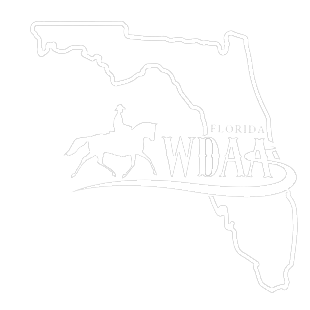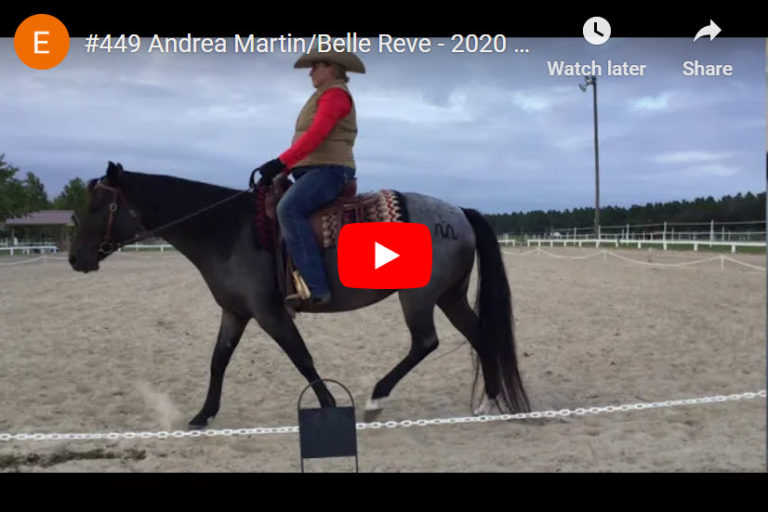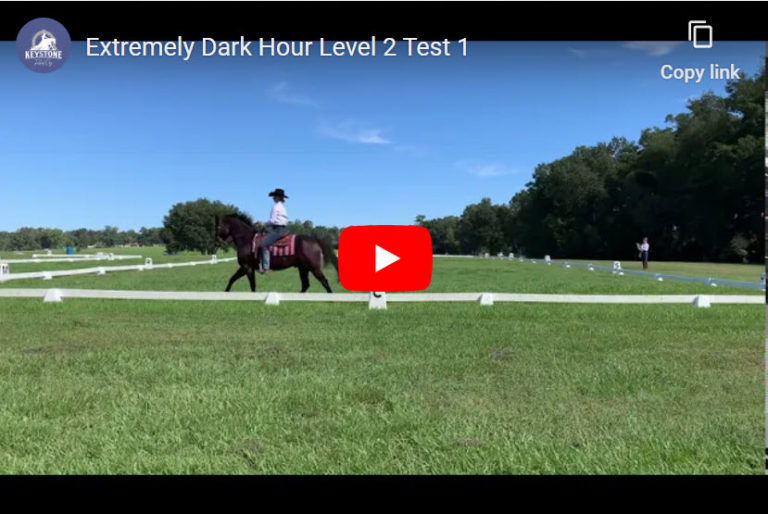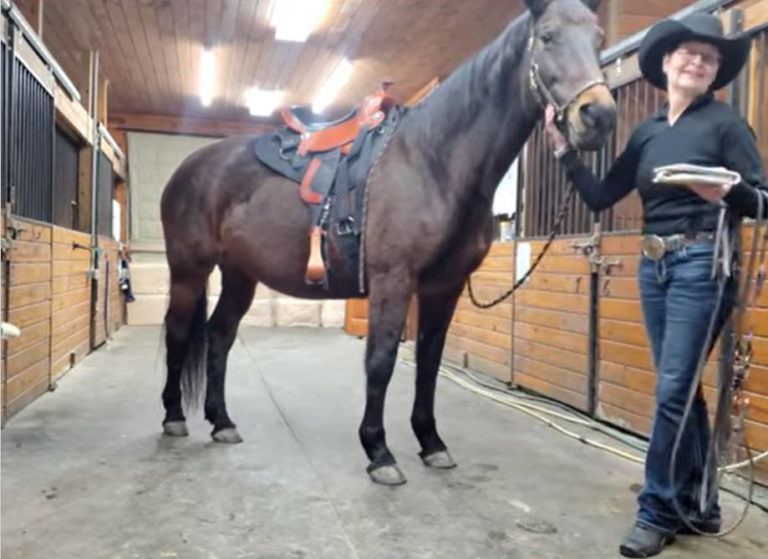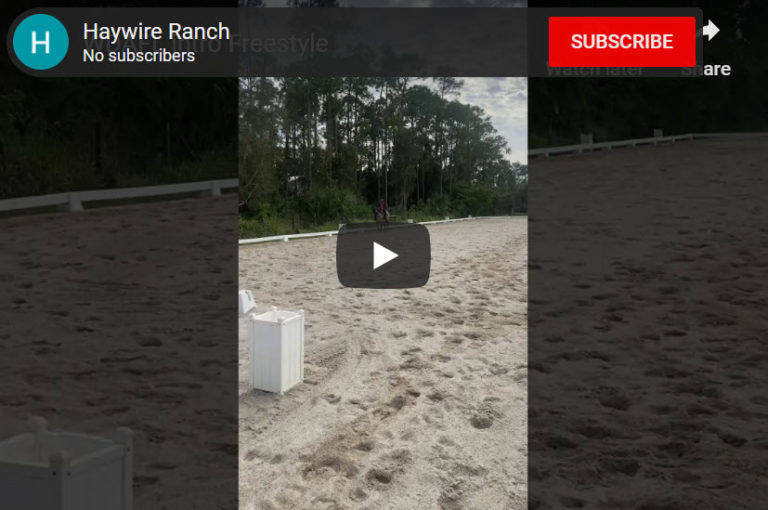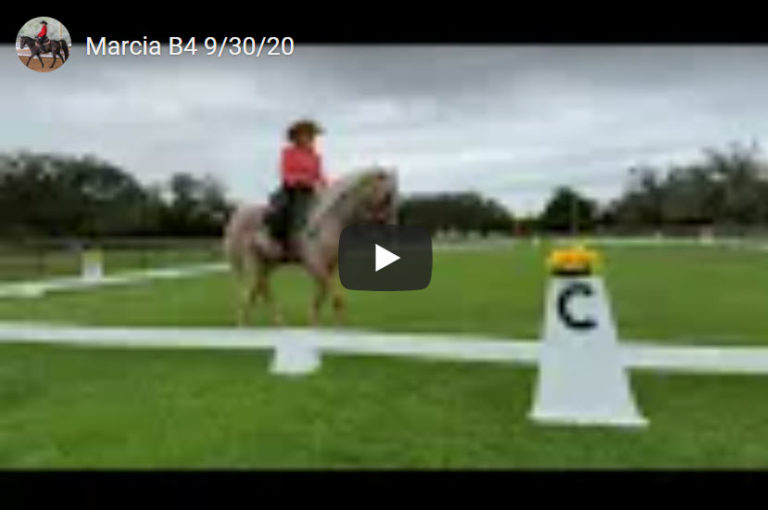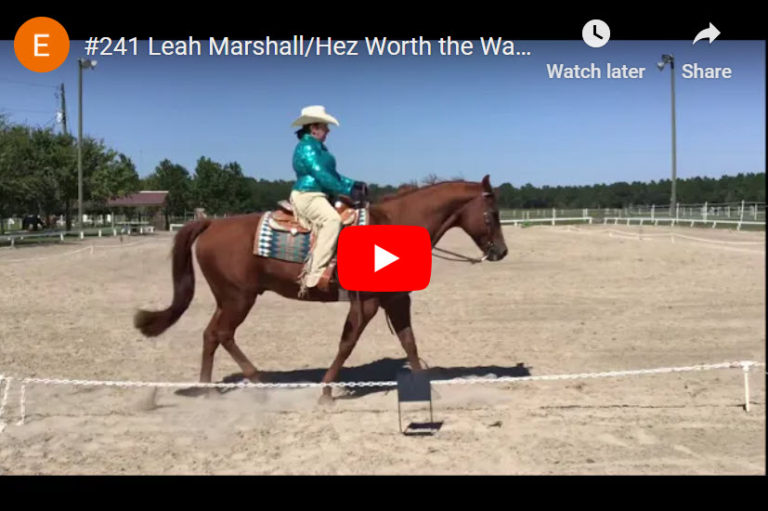We do the homework, and our horse is prepared for a test. Its gaits are correct and forward. It’s balanced and quiet in the bridle. We know the test well enough to not need a caller, even if we use one.
There are some things you can do to make sure that your video can be judged as well as possible, by a person sitting hundreds of miles away, on a day that is long since your video was made.
Considerations for different rings and lighting:
Have a practice run. Film your test at the same time of day, with the same lighting and same clothing/tack you will use. Looking at it may help you to find ways to improve the overall quality of the video. Be sure the camera focuses correctly. There may be a little fuzziness at the beginning (because the focus is going from the identification card to the horse coming into the ring), but, if it continues, you may need to use other equipment.
The judge will verify your identification on the card sent to you for the beginning of filming. Try to hold it at least 5 seconds, and be sure it isn’t moving.
Inside or outside, try to have letters visible and large if possible. If your arena’s rail isn’t close to the wall where the letters are posted. At least get cones on the rail where the letters should be. If your arena is too wide for a standard ring, put some rails down on the long sides and corners for better accuracy.
Outside, in direct light (not dawn or dusk), with lighter footing is optimum. If your footing is dark, be sure there is light enough to see dark legs. Indoor arenas usually need the lights on.
Pay attention to the background. If your outside arena is too close to shade trees, it may be hard to see at the end of the ring. Film when the shadows aren’t near the ring.
If your inside arena is open at the end, and outside is very bright sunlight, the centerline will often show only the silhouette of the horse. We can judge straightness and immobility, but, some of the finer points of the movements on the centerline may be hard to see.
If the judge can’t see a movement. It cannot be a good score. If one end of the ring is a large open door into bright sunlight, consider turning the ring letters around and shooting inward towards the wall rather than the door. If you are in an open ended arena with a cover, you might want to film with the lights on at a time of day when it’s overcast outside to play down the contrast.
Try to position the camera, on a tripod for stability directly on C, so the judge can see how straight your entry is. You can follow with Zooming, but, don’t overdo this. It makes the ride appear choppy and sometimes loses the sides and letters. Cameras with automatic zooms can jump a bit–or even focus on something else for a few seconds.
Be sure your camera is either set back from C, or, when movements happen at H and M, the cameraperson can turn slightly to follow through the corner.
If your arena is fenced or in a building that is only the length of the ring, remember that you don’t have to start from outside the ring. Just ride to A and turn down the centerline for your beginning of the test.
The cameraperson should stand, not sit. If the camera is too low to the ground, it will be hard to see the horse’s legs at the end of the ring, especially if there is any low spot.
One other idea which I find funny: I’ve seen several videos with horses that spook at something off side from the arena or in the corner. My thought was, “How can this be, if the horses are being worked in their own arena?” The answer– to “clear” the arena, the people pushed any poles, jumps, and extra letters into that one spot. The horse, never having seem those things in that place, takes issue. It would be helpful if you would take a few extra steps to put the debris out of the area.
What are you wearing?
Our rules give a lot of latitude to our outfits so that we can include riders who want to cross over from the show ring and riders who come from a trail or games backgrounds.
Try to find a little contrast in your tack, horse, and outfit. If it’s all black, on a dark horse the judge won’t be able to appreciate a following seat. Color touches are appreciated and make your ride more personal. Color is not a factor in judging, but it does get the judge’s attention.
If you are going to wear a bold pattern, like stripes or a big plaid, remember, it will bring attention to your posture. Same goes for bling accents. If you have a problem with keeping your lower leg secure, those flashy red sequined boots may not be the best choice–even if they are your faves.
Gloves always finish an outfit. But, if your hands are not independent, you tend to widen them, or hold them uneven, you might stick with a more neutral color that doesn’t bring attention to them.
A clean, workmanlike outfit is always appreciated. No matter what hat you wear, try to be sure your hair is placed neatly and secure.
How to finish:
Your tack evaluation is important! If the camera person can walk around the horse and show both sides, that’s fine (just try not to jiggle the camera! ) They should stand still and let the viewer see both boots if spurs are used. If there are rowels on the spurs, the rider, or an assistant should turn them so that it is clear than they can rotate.
If the camera is attached to a tripod, or the arena fence doesn’t allow for the person taping to come into the arena, the rider should turn the horse to both sides and allow the video to zoom in to the boots/spurs.
Then, dismount, and safely drop the bridle so that the bit is clearly seen. Assistants may be used if necessary. Be sure that your hand is not in front of the bit. If the bit is jointed, it’s helpful if you can hold both shanks apart. Allow a few seconds.
And, I always like to see the rider smile at the end of their tape. Not required, but, shows confidence in their achievement.
Good Luck!
